Have you noticed your shun knife not living up to its former glory days? Perhaps it no longer moves through food like liquid, or you’ve spotted minor chips.
If that’s the case — don’t panic. You can easily perform your own shun knife repair process without taking any knife sharpening service.
But wondering, HOW?
You can make your Shun knife brand-new again by sharpening its blade. All you need is a whetstone, water, and a soft cloth. Raise your shun knife between 15-18 degrees with the blade gently touching the whetstone’s surface. Pull the blade down heel to the tip for best results.
If you didn’t know this, you’re not alone. Most collectors think their blade is weakened forever after a few years of use. But you can make your shun knife brand-new with this guide.
What Damages Your Shun Knife?
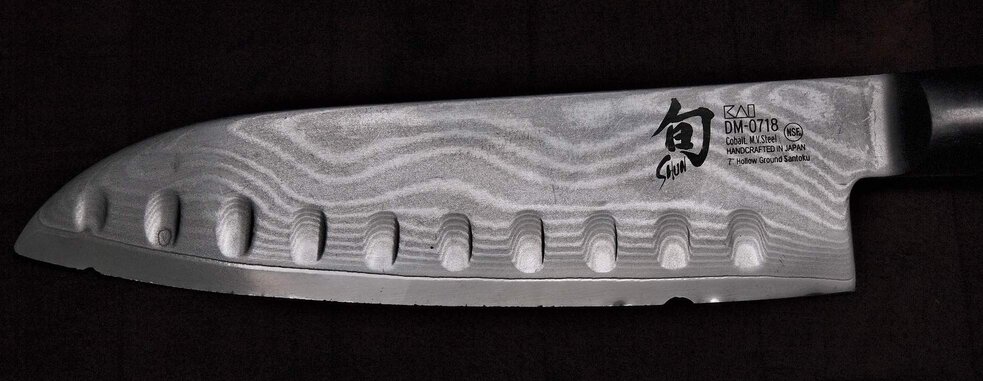
If you’re new to shun knives, like many people, you may be unaware of the proper cutting technique. The knife is designed not to chop, but to slice. To avoid making a chip, don’t force an up-and-down chopping motion. Instead, push the knife forward and down while cutting food. In order to ready the next slice, pull the knife up and towards you.
Damage may also occur if you use your knife on anything other than meats and thin-skinned vegetables. The blades are not designed for bones or thick vegetables, like pumpkins, butternut squash, etc.
You may know the proper technique and have never used your knife on bone, yet still find yourself with damaged shun knives. How?
The likely culprit: moisture. If any moisture remains on the blade edge, you’ll start noticing small chips or missing pieces. This is pretty common in all types of knives, including chef knives.
Leftover moisture brings the following consequences:
- It weakens stainless steel, decreasing edge retention capabilities
- It causes micro-corrosion (aka chipping)
Even when used responsibly, regular kitchen use can leave your cutting edge chipped in weakened sections.
You can guard against this damage by referring to below shun knife care tips:
PROPER CLEANING:
- Hand wash with gentle dish soap
- Wash the knife immediately after use
- Dry fully with a soft, absorbent cloth or towel
- Let air dry for a few additional minutes
- Store in the appropriate area (knife block, case, or sheathed)
WHAT TO AVOID:
- Don’t use steel wool or scouring pads for cleaning
- Avoid citrus soaps, or you risk rusting
- Don’t submerge the knife in soapy water for an extended time
The main takeaway here is to keep your knives, including kitchen knives, moisture-free to ensure durability and performance. Now, let’s get on to how to repair chipped shun knife.
How to Repair Shun Knife: 5 Beginner-Friendly Steps
Repairing your shun knife is simple.
But you have to be careful. It requires close attention, as you are working with a very delicate blade.
Keep these in mind before you start the repairing shun knife process:
- Keep eyes on the knife while sharpening.
- Check routinely for edge evenness.
- Rinse loose material off stone and knife as you work.
Things You’ll Need
- Whetstones: A 300-grit whetstone for repairing chipping and 1,000-grit whetstone to finish repairs or sharpen.
- Stone holder: Keep your whetstone steady while sharpening with a holder.
- Water: You can use your sink or have a sharpening pond.
- Soft Cloth: Either cotton or microfiber for drying.
Step 1: Preparing your whetstone
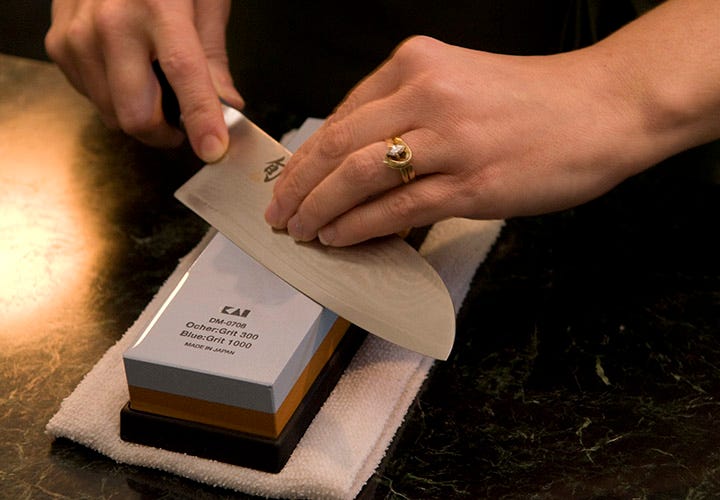
The first step involves prepping your whetstone. You do this by:
- Start by submerging your whetstone in lukewarm water for 5 to 10 minutes.
- Place stone on towel or water/slip-resistant surface.
- Draw an even grid on your whetstone with a pencil.
- Rub drawn-on whetstone on a lower-grit stone. This makes it easier to achieve a flat surface, as you’ll reveal where dips and troughs are.
- For reshaping your damaged shun knives, secure the lower-grit stone in your stone holder.
- If you’re only sharpening your edge, then use the 1,000-grit whetstone.
- Drizzle water on top of your stone.
Step 2: Angle your knife
When your whetstone is ready, you’ll need to angle your knife for repair.
- Lay your shun knife flat against your water stone.
- Using your dominant hand, raise your knife’s spine and secure an angle between 15 and 18 degrees.
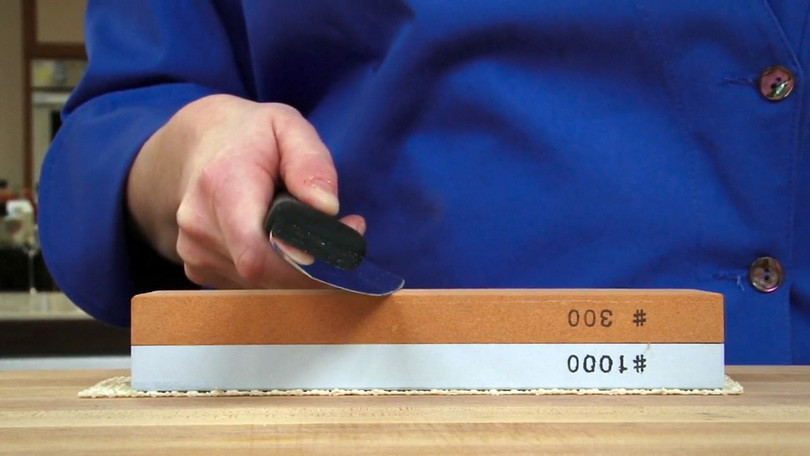
To measure angle:
- Placing your free pinky between the stone and spine will give you a great angle.
- Rest your knife’s spine on a thin wine cork placed on its side at the end of the whetstone.
Step 3: Raise the burr
A burr is vital for sharpening and repairing your knife. It’s a tiny metal strip that builds at your knife’s apex, always rising from the side opposite of the one you’re grinding.
The burr tells us two major things:
- It’s time to switch the side we’re sharpening.
- We’re reaching the edge of our knife.
To get your burr:
- Start with the right side of your knife’s blade
- Apply slight pressure on the blade, using two fingers. Position them as close to your knife’s edge as you can without touching your stone.
- Position the tip near you, at the bottom of your whetstone, then push the blade to the top.
- As you move, adjust your fingers. Start with them at the knife’s tip.
- When the knife comes toward you, release all pressure and pause.
- Shift fingers down slightly in the direction of the heel.
Step 4: Flip your knife
You want to repair your whole knife, right? Just working on one side won’t help. You’ll need to flip your knife to the opposite side to continue repairs.
Step 5: Sharpen the opposite side
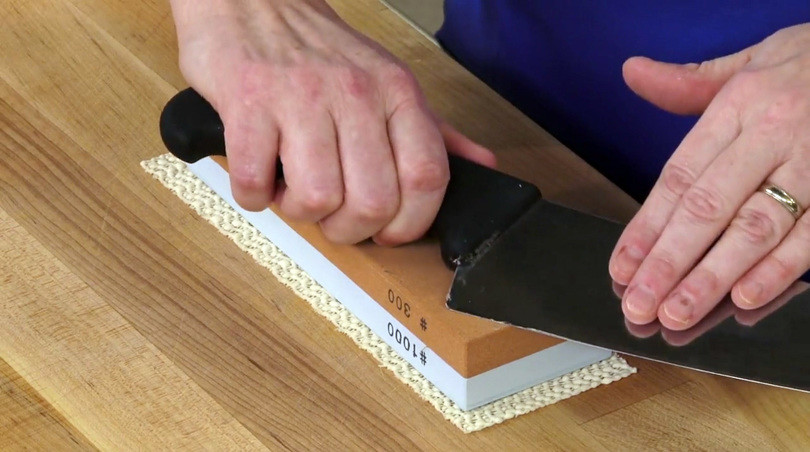
Now you’ll need to work on the opposite side. Re-wet the stones as needed and position your knife in the same way as before (angled, with two fingers applying pressure to the blade).
In the same tip-to-heel fashion, work the other side. When you achieve your burr, you’ll know your knife is finished. Rinse and dry your knife for a clean polish.
Extra Tips for Shun Knife Repair
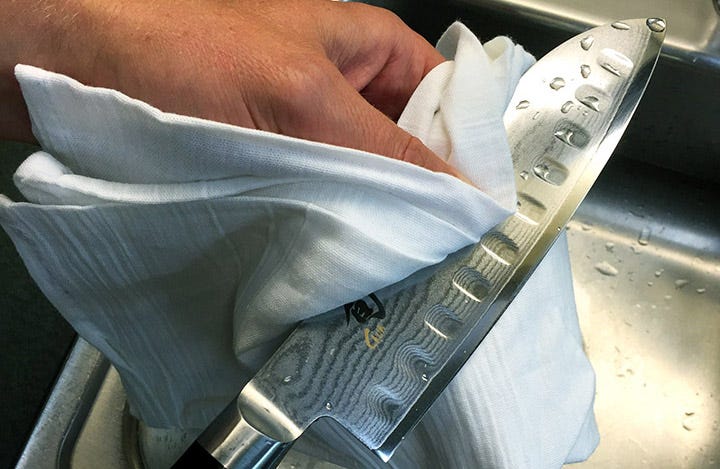
Here are some additional safety and shun knife repairing tips to keep in mind:
- Look at the blade’s edge under bright light. Flat areas and chips will reflect the light.
- Flatten your whetstone (as needed) by rubbing two wet stones together.
- Never cut toward yourself, or you risk injury.
- For repairing, angle consistency is more important than an exact degree.
- If your stone “screams” while grinding, add more water to it.
How Do You Take Care of a Shun Knife?
To keep these premium Japanese knives in pristine condition, keep the following in mind:
- Cutting technique: Don’t “chop” with a Shun knife. Instead, implement a smooth, slicing motion.
- Cutting surface: For the best maintenance, use a softwood cutting board.
- Washing technique: Wash with gentle soaps and dry with soft clothes to avoid rust issues. For more details, refer to our proper cleaning section above.
- Storage: Your Shun knife belongs in a woodblock, magnetic knife bar, knife case, or sheath. Do not leave them loose in a drawer.
Frequently Asked Questions
Do Shun knives have a lifetime warranty?
All Shun Cutlery has a limited lifetime warranty, but the warranty repair only applies to the original owner. The brand also offers a free sharpening service for products purchased in the USA, Canada, and Mexico. However, you may have to bear the shipping cost for returning your product to the Tualatin, Oregon headquarter.
Are Shun knives Japanese?
The knives are manufactured by Kai Corporation. It’s a Japanese company based in Seki city.
How often do you sharpen a Shun knife?
If used regularly, you can sharpen your knife once a week.
Are Shun knives single bevel?
Most Shun knives are double-bevel, but Shun’s Classic Pro Series contains a single bevel.
Are Shun knives full tang?
All lines have a full tang.
What is the proper way to hone a Shun blade?
Use Shun honing steel, which includes a built-in guide for your blade. A couple of light strokes will do. Just do not use diamond steel for honing.
Is there anything Shun knives shouldn’t be used on?
Shun knives are delicate, and most are meant for precision. Don’t use on:
- Bones
- Joints
- Frozen foods
- Certain tough vegetables or fruit (squash, pineapple, watermelon)
However, you can use the Shun Classic Meat Cleavers for some heavy-duty kitchen tasks.
How can I help maintain the life of my Shun knife?
Aside from sharpening, how you use the knife is also important. Remember:
- Slice with a fluid motion, moving your blade forward or backward
- Never push straight down
How should you store Shun knives?
There are places you can store your knife, including these options:
- Knife case
- Block
- In-drawer holder
- Sheath
- Magnetic bar
Just don’t leave your knife loose in your drawer. This may damage your knife and puts your safety at risk.
How hard are Shun knives?
In Rockwell scale of hardness, most Shun knives score around 60 to 62. Therefore, the knives are pretty durable and tough.
Verdict
Sharpening your shun knife gives it the smooth slicing abilities you experienced when you first purchased it. It makes food prep so much easier and keeps your knife in like-new condition. Once your knife is back in shape, you’ll wonder why you didn’t sharpen it earlier.
If you tried out this tutorial, let me know how it turned out. Have more questions that didn’t get answered in this guide? Leave a comment below. And if you found this article useful, feel free to share!
